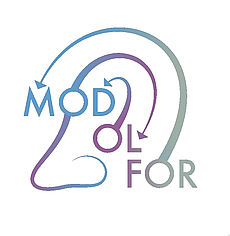Bernstein Network News. Find the latest news from our researchers regarding current research results, new research projects and initiatives as well as awards and prizes.
How value shapes the fluctuations of conscious perception
What we perceive might sometimes reflect the outcome of a value-based decision-making process, a new analysis of the literature suggests.
Different flavors of inhibition save the day
Scientists gain insights on how deprivation-induced synaptic changes affect excitatory and inhibitory firing rates in the sensory cortex.
During development, lack of sensory experience elicits powerful plasticity mechanisms that alter brain circuitry. Many inhibitory neuron subtypes are known to influence circuit dynamics, however, how they interact with plasticity is not yet fully understood. Scientists at the Max Planck Institute for Brain Research in Frankfurt have investigated how synaptic plasticity in rodents, who were deprived of vision in one eye, affects network activity in a circuit model of the sensory cortex. Their findings point to the role of different inhibitory interneuron subtypes to explain the temporal pattern of firing rate change of excitatory and inhibitory neurons during sensory deprivation.
ERC Starting Grant for Philipp Berens
Cluster speaker Philipp Berens has received a Starting Grant from the European Research Council (ERC) for his "NextMechMod" project. The project, which aims to develop new models and algorithms for studying amacrine cells, particular nerve cells in the retina of the eye, will be funded with a total of around 1.5 million euros over a period of five years. With the Starting Grants, the ERC provides outstanding young scientists with additional funding in their research careers.
PhD program Computational Neuroscience will be funded for three year by the Einstein Foundation
After a competitive selection process, our PhD program will be funded with 300,000 € for three years by the Berlin Einstein Foundation as Einstein Foundation Doctoral Program.
Out of sight, quickly out of mind
We are very bad at recalling objects at our gaze direction from short-term memory - even though this is the area we see most sharply, report brain researchers from Tübingen led by Professor Ziad Hafed.
How can smell control behavior?
The DFG (German Research Foundation) is funding the research group led by Professor Dr. Veronica Egger of the University of Regensburg in the research project "Modulation of Olfaction: How Recurrent Circuits Determine State-Dependent Behavior" with about 4.2 million euros.
How our minds re-create the past
Funding for the research unit approved for a further three years
Multi-million funding for AI research “made in Berlin”
Joint press release of the Senate Department for Higher Education and Research, Health, Long-Term Care and Gender Equality, BIFOLD and Technische Universität Berlin
Reading center in the brain builds a word filter
Recognizing words is the basis of understanding the meaning of a text. When we read, we move our eyes very efficiently and fast from word to word. Generally, this flow is only interrupted when we encounter an unfamiliar word. Using functional magnetic resonance imaging (fMRI), an international team of scientists at the University of Vienna and Goethe University Frankfurt discovered that the distinction of familiar words and unfamiliar strings of characters, in the sense of a filtering process, also serves well as a model for the patterns of brain activity which are observed during reading. This filter is located in the lower left temporal lobe, a brain area which is important for the visual word recognition. These results were recently published in PLOS Computational Biology.
Horizon Europe: Charité coordinates four new EU projects
Three European collaborative projects and one comprehensive infrastructure project, all of which are to be led by researchers from Charité – Universitätsmedizin Berlin and the Berlin Institute of Health at Charité (BIH), have been given the go-ahead by the EU Commission. Charité researchers will also be involved in two further projects which are due to be launched. The new Charité-led projects will address mental health issues, an innovative cell therapy, prognosis after stroke, and virtual models of the brain. Charité will receive appropriately € 7 million in funding for this research. The EU’s framework program for research and innovation is the largest single-source funding program in the world.
















